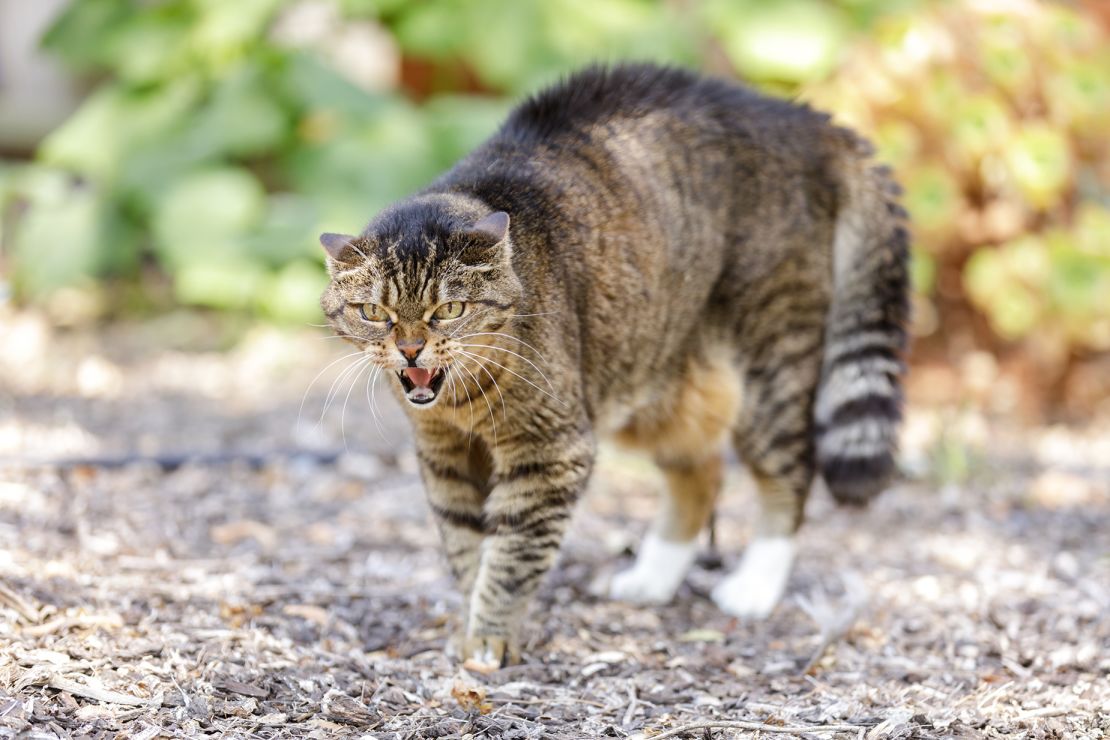Ears flattened, constricted pupils, a lick of the lips. If you’ve ever wondered if your feline friends’ furry faces were saying something whenever they got together, chances are they were.
In a study published in the journal Behavioural Processes last month, two US scientists counted 276 different facial expressions when domesticated cats interacted with one another.
“Our study demonstrates that cat communication is more complex than previously assumed,” study co-author Brittany Florkiewicz, an evolutionary psychologist at Lyon College in Arkansas, told CNN Wednesday, adding that their findings suggest that domestication has a significant impact on the development of facial signaling.

Cats feeling friendly show closed eyes and forward-facing ears.
Image by Chris Winsor/Moment RF/Getty Images
Florkiewicz explained that domesticated cats are typically more socially tolerant than their wildcat counterparts because of the way they live in proximity to humans, so the researchers were expecting to see expression in both positive and negative contexts—but they were surprised to “observe 276 morphologically distinct facial expressions.”
According to Florkiewicz and lead author Lauren Scott, a medical student from the University of Kansas Medical Center with a personal interest in cats, domestication allows more cat-to-cat social interactions, which is why the pair believed they would show more expression.

To collect data, Scott filmed 53 cats at a local cat café when both were based at University of California, Los Angeles, between August 2021 and June 2022. From the 194 minutes of video footage gathered, she recorded 186 feline interactions. The cats were adult domestic shorthairs of both sexes, all neutered or spayed.
Both researchers assessed the differences in expression with a coding system designed specifically for cats, called the cat Facial Action Coding System, and looking at the number and types of facial muscle movements. The study added that muscle movements associated with biological processes such as breathing and yawning were not included.

A cat showing aggression will have constricted pupils and ears flattened against its head.
yhelfman/iStockphoto/Getty Images
While they were not able to attribute a meaning to each expression they recorded, Florkiewicz and Scott found that 45.7% of coded expressions were friendly, while 37% were aggressive.
The paper detailed that a friendly expression is shown when the ears and whiskers move forward while the eyes close, and an aggressive cat has constricted pupils, ears flattened against the head and a tongue-swipe of the lip.
“Our hope is to expand our sample size to include cats living in other locations…looking at the facial expressions of cats living in multi-cat homes, feral colonies” and so on, Florkiewicz said.
Another goal for the future is to conduct a follow-up study to determine what more of the expressions mean, she added.

